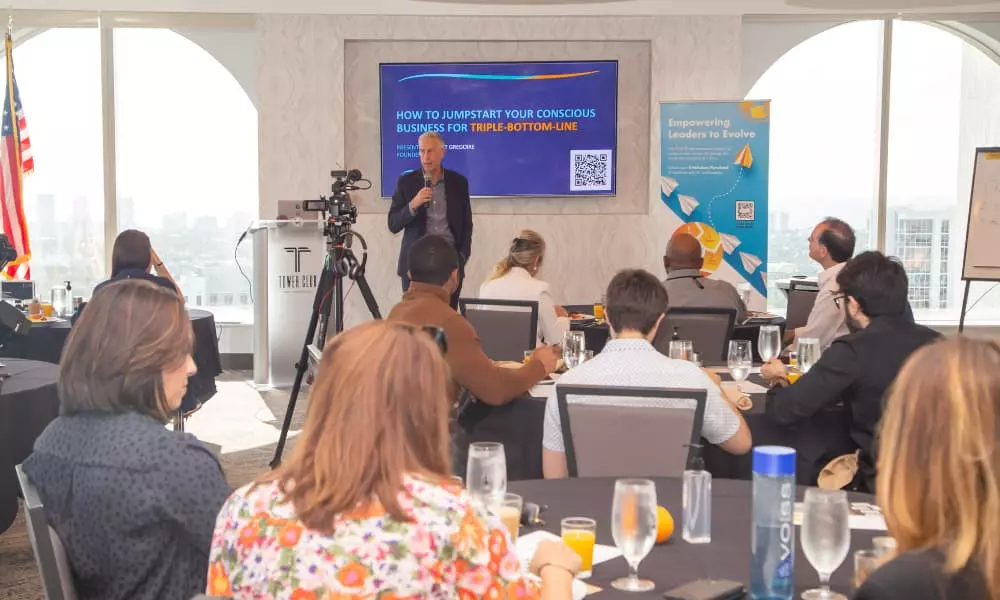Visionaries can’t go it alone. You provide the ideas; integrators make them happen.
Key Takeaways:
- A visionary focuses on future goals and an integrator excels at managing day-to-day operations.
- When these two roles work well together, they can take your business to unimagined heights.
- It’s the perfect combination of feelings and logic.
- Integrators concentrate on process, project management, and consensus building.
- Effective integrators know how to strike a balance between “no” and “not right now.”
In the world of business, effective leadership is crucial for success. One concept that has gained significant attention is the dynamic between visionaries and integrators. Coined in the book “Rocket Fuel” by Mark Winters and Gino Wickman, this concept splits the traditional CEO /Entrepreneur founder role into two distinct roles that are opposite in nature and usually expected from the same person
This division is a core aspect of the Entrepreneurial Operating System (EOS), distinguishing the long-term vision from the immediate focus. According to Rocket Fuel University™, entrepreneurial businesses typically have two key leaders – visionaries and integrators. Effective collaboration between these roles has the potential to propel a business to unprecedented success.
Having these two separate functions is vital. Typically, when you scale a business, you’re looking toward the future while implementing ideas and systems that move the business forward in the present. But once once you prove market fit and are starting to scale, the separation between future and present becomes a necessity for the business to evolve beyond the “adolescent” phase.
It’s about business maturity
As entrepreneurs, we get attached emotionally and mentally, feeling we have to do everything in our business. And that’s where a level of maturity comes in. But during the crucial scaling phase, this can create a bit of an organizational rollercoaster. The visionary side is all about innovation, while the business needs a strong foundation, consistency, and predictability.
Recognizing this polar split in the organization’s personality is a sign of entrepreneurial maturity. It means finding a smart balance between pushing for change and shoring up existing structures. Getting this mix right ensures growth and stability, setting the stage for a mature and adaptable organization ready to tackle whatever the business world throws its way. Once we learn to delegate, trust, and verify, the organization will grow stronger.
Defining the duo
So, what are the differences between a visionary and an integrator? This is important information to have as we remove ourselves from day-to-day decision-making to avoid becoming a bottleneck. Our job is to create a succession structure within our leadership team that begins with the integrator. This person will hold everyone accountable and make sure a plan is in place.
The integrator is someone who excels at:
- Logic
- Process
- Project management
- Consensus building
These traits complement those of the visionary. A visionary’s thoughts revolve around the future state, the market, research and development, and the business as a whole. They identify:
- The strategic direction
- The new ideas
- The big relationships
- The feelings
Where the integrator is guided by logic, the visionary draws upon feelings and emotions. The visionary lives in the future, and the integrator lives in the now.
The responsibilities of an integrator
The number one function of an integrator is to help the visionary become more visionary. One of the biggest tension points between the visionary and the integrator is that the visionary has a ton of ideas and is future-focused, while the integrator is concerned with the immediacy of project management and punch list items. Integrators make sure things get done. Their role includes:
- Supporting the visionary. Integrators support visionaries by insulating them from day-to-day operations and allowing them to focus on strategic initiatives. They help visionaries prioritize ideas, validate them, and create a separate space for future consideration.
- Operating Efficiency. Integrators are responsible for understanding and implementing EOS within an organization. They become the expert and serve as a go-to resource for team members seeking guidance on improving processes or enhancing performance.
- Focus in 90 day world. Integrators make sure that level 10 meetings run efficiently at all levels in the company, ensuring everyone is focused on having pure value discussions rather than getting caught up in urgent but less important matters. They guide leaders through identifying core issues, facilitating effective discussions, and ensuring efficient problem-solving.
The integrator’s role is often underestimated but is crucial for long-term success. A healthy visionary-integrator duo is essential for a company’s growth and stability. Integrators foster alignment within the leadership team, maintain same-page meetings, and facilitate open communication to harness the full potential of this dynamic partnership.
Creating a balanced, productive, and creative environment
The job of the integrator is to find balance – not saying “no” but rather, “not right now.” It’s about focus. The integrator makes sure everyone is focused on the current rocks, the current quarter, and the current plan. Everything that could alter the “now” must be sidelined for the time being, and they must make it clear what will happen if the organization veers off course. This fosters environmental creativity in a way that maintains focus on today.
An integrator’s role is easier with EOS because everyone is running their level 10 meetings, everyone has a scorecard, and everyone has their quarterly rocks.
Running effective Level 10 meetings
Level 10 meetings are the “war room” time for the leadership team. If they get stuck in the minutia and the urgent, the team doesn’t get into the important, which means no progress is made. This makes the rocks the most important things to build the company we want in the future – emergencies drag a visionary into the now.
Pure value comes from solving three issues a week, which means that Level 10s must be run efficiently. The reward for that efficiency is solving more than 150 issues each year. That progress is what will move the company forward.
Mastering the IDS process in meetings
Integrators play a crucial role in facilitating effective leadership team meetings and helping leaders facilitate their department meetings. They also have the essential responsibility of using their mastery of the IDS (identify, discuss, solve) process to guide Level 10 meetings. During Level 10 meetings, there’s a dedicated section for IDS discussions. It’s vital for the integrator to effectively guide and moderate the session. IDS sets the tone for focused problem-solving and makes sure everyone understands the significance by:
- Identifying slowly. A common tendency in meetings is to rush through identification while spending too much time on discussion and quick solutions. Integrators should encourage slowing down during the identification phase. By taking time to understand the core issue at hand, identifying who is accountable for it, and determining what support or input is needed from others involved, teams can gain clarity on what they are truly discussing.
- Balancing Discussion Speed. Skipping or rushing through identification (the “I” in IDS) often leads to chaotic discussions where multiple issues are addressed simultaneously. To maintain focus and efficiency within discussions, it is crucial to slow down during identification before moving into discussion mode to allow participants to address one issue at a time rather than getting overwhelmed by multiple topics.
- Slowing Down Solving. Once thorough discussion has taken place regarding possible solutions for an identified issue, integrators need to slow down before moving into solving mode. This pause allows teams to carefully consider commitments or action items arising from these conversations—ensuring that decisions made align with the overall goals and objectives of the organization.
- Verbalizing Commitments and Action Items. During the solving phase, integrators should ensure that commitments or action items resulting from discussions are clearly stated. These commitments should have a specific timeline, typically within seven to 14 days, to address the identified issue effectively. By verbalizing these commitments and ensuring accountability, teams can move forward with confidence.
The transformative impact of integrators
It’s crucial to recognize and emphasize the transformative power of integrators in achieving long-term success for businesses. The partnership between visionaries and integrators is essential for overcoming conflicts and maintaining alignment within leadership teams. By fostering healthy visionary-integrator dynamics through same-page meetings and consistent communication, organizations can harness their full potential.
No company can achieve true success without both visionaries and integrators working together harmoniously. While their roles may naturally conflict at times due to differing perspectives, businesses need to acknowledge their complementary strengths to thrive in today’s competitive landscape.



